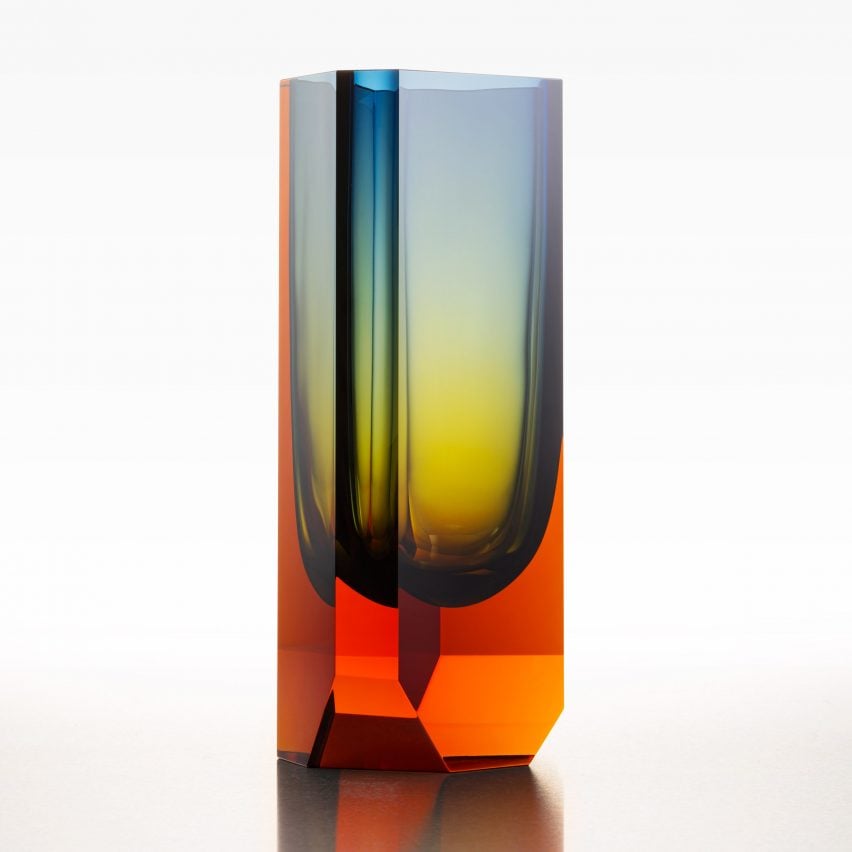Czech glassworks Moser has developed a series of hand-blown crystal vases featuring crisp lines and an atmospheric colour palette that evokes the design of brutalist buildings from the mid-20th century.
The Magnus collection was designed by Moser‘s creative director Jan Plecháč, who initially became interested in the principles of brutalism more than a decade ago while studying architecture at the Academy of Arts, Architecture and Design (UMPRUM) in Prague.

Plecháč wanted to explore how brutalist principles could be applied to a completely different material and felt that the contrast between the movement’s uncompromising aesthetic and the fragility of hand-blown crystal would produce intriguing results.
“The collection emerged from my deep and lasting fascination with brutalism – a movement known for its clarity, strength and raw, unrestrained approach to mass and form,” Plecháč told Dezeen.

“Each vase in the Magnus collection has its own character, shape and scale, yet they’re bound by a shared visual language,” he added.
“Like a series of architectural volumes, they communicate together while retaining individuality. The goal was to channel the essence of brutalism into something unexpected – glass that behaves like architecture.”

The bold lines and proportions of Plecháč’s vessels were designed to evoke brutalist buildings, typically characterised by expressive and functionalist forms that display elements of their construction.
The collection’s colour palette also references interiors from the brutalist period, which often featured warm, earthy tones to complement the ruggedness and raw materiality of the architecture.
The vessels are made using a traditional process known as underlaying, which enables colours to be layered in order to produce a dynamic visual effect that shifts and responds to light.
The Magnus collection is the first in Moser’s history to combine shades of topaz and blue, which together create a subtle yellow-green hue, while the base of the vases is finished in smoky reddish-brown tones.

“This mood, this sense of both warmth and austerity, was exactly what I sought to infuse into the glass – creating not just colours, but an emotional connection to the space they inhabit,” he explained.
The collection comprises three different-sized vases, crafted at Moser’s workshop in Karlovy Vary using artisanal methods including hand blowing, surface cutting, melting and colour mixing.

This melding of heritage and innovation is typical of Plecháč’s approach since he became Moser’s creative director in 2022. The 168-year-old brand is renowned for its handmade crystal artworks, but Plecháč is keen to ensure it also produces objects that are suited to modern design sensibilities.
“By honouring traditional techniques we’re able to push the boundaries of what’s possible, creating something that feels both timeless and forward-thinking,” he added. “Through this collection, we’re not just preserving our past; we’re shaping the future of Moser.”
Before joining Moser, Plecháč was known for his fruitful collaboration with Czech glassworks Lasvit, as well as his work with fellow UMPRUM graduate Henry Wielgus.
The post Moser's Magnus vases "channel the essence of brutalism" appeared first on Dezeen.

